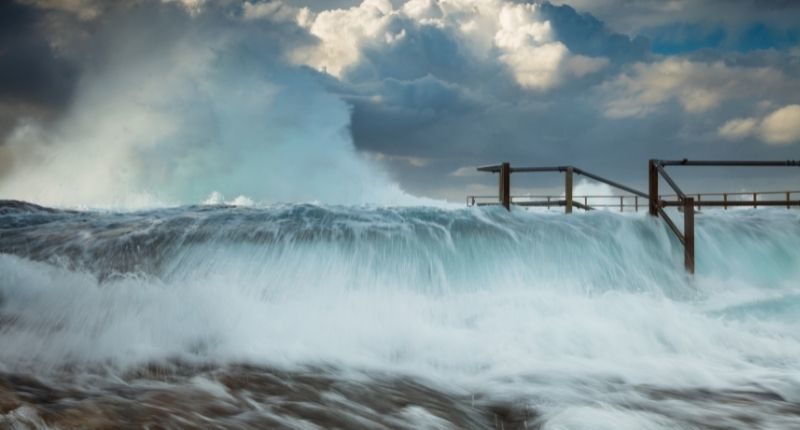- This will be the third consecutive year a La Nina event has occurred during summer, has not occurred in Australia for over 20 years
- Quantity surveyor Marty Sadlier argues most residential properties in Australia are underinsured
- The rental crisis will also be exacerbated if more properties get damaged
Australia is on the verge of a devastating crisis due to the triple-dip La Niña weather event this summer, argues Marty Sadlier, director at MCG Quantity Surveyors.
“What’s occurred with the floods in Victoria looks like an unsettling precursor for the summer ahead,” said Mr Sadlier, who is the business partner of The Property Tribune contributor Mike Mortlock.
“I’m incredibly concerned this year’s La Niña will financially devastate a huge number of homeowners and investors who are substantially under insured.”
The Bureau of Meteorology has declared for the third year running a La Niña event is underway.
“When a La Niña moves into the third year, it is called a ‘triple dip’. That should be a huge cause for concern.
Mr Sadlier noted that the last time such a triple-dip event occurred was over two decades ago, from 1998 to 2001.
“Because we’ve already had two wet summers, dam catchments are up and water tables are high, so flood events this year will be more likely. “
“We’re also still recovering financially from the previous two years of flooding which resulted in billions of dollars of damage throughout the nation. Along with the loss of life and property, these events have exacerbated other elements that will make things difficult.”
Marty Sadlier, MCG Quantity Surveyors

This year’s flooding could be the most financially devastating in recent history
Mr Sadlier noted that there are three reasons why the flooding being experienced this year could be one of the most financially devastating in recent history.
Pandemic-inflicted construction cost rises
Firstly, he noted that rising construction costs over the past two years mean that any insurance value assessments from as recent as 12 months ago could be already redundant.
“Repairs to previously flooded property has seen the demand for labour and materials continue to skyrocket. If the heavy rains cause more widespread flooding again this year, expect to see our already strained construction industry put under further stress.
“The fallout will be dramatic because costs have already risen to new highs. For example, we’ve seen the cost of timber rise in the past twelve months by about 21 per cent and steel by around 42 per cent.
“There’s every chance that if La Niña wreaks havoc this year, construction costs will remain at their record highs well into 2023 and possibly beyond.”
Underinsurance
Next, he reiterated the level of underinsurance across Australia.
“In 2020, CANSTAR research concluded that 83 per cent of Australians were underinsured. Then in 2021, the Australian Bureau of Statistics (ABS) noted that 2.44 million Australian households have no house and contents insurance – that’s 23 per cent of all Australian homes.”
“In reality, I believe over 90 per cent of properties in Australia are not carrying adequate insurance.
Mr Sadlier added that many Australian residential owners don’t carry out proper assessments of their property’s replacement costs each year.
“Most just opt to add a little extra to last year’s guesstimate come insurance renewal time.
“Worse still are those who rely solely on online calculators to help them assess their insurance values. These wildly inaccurate “tools” are causing major headaches for those who thought they were adequately insured.
“Most online calculators don’t make any allowances for consultants’ fees, demolition and forecast building cost inflation. In addition, they miss allowances for site works, retaining walls, mature landscaping and additional works that have been carried out over time.”
The rental crisis
Lastly, Mr Sadlier noted the rental crisis role in the looming insurance crisis.
The foods, he said, will have significant imputations on construction programs, which adds continuous strain to the supply of building materials and increase upward pressure on construction costs.
“This means people will be displaced for longer periods of time and will need alternative shelter. Unfortunately, this is occurring during a time of enormous rental stress across our capital cities and major regional centres.
“A big flood would only add more demand to the rental market while also removing a swathe of supply. You can see how that equation will cause the currently dire rental situation to become even worse.”
In conclusion, Mr Sadlier said he “hates to be the bearer of bad news” but the weather maps should concern all property owners.
“I suggest the best move people can make is to be financially storm ready. Make sure your insurance is up to date and that it delivers comprehensive coverage.
“Most important of all is to confirm you have an updated insurance value estimate for your home that has been prepared by a qualified professional such as a quantity surveyor. This is the only way to guarantee you have adequate coverage as a safety net against the weather.”








